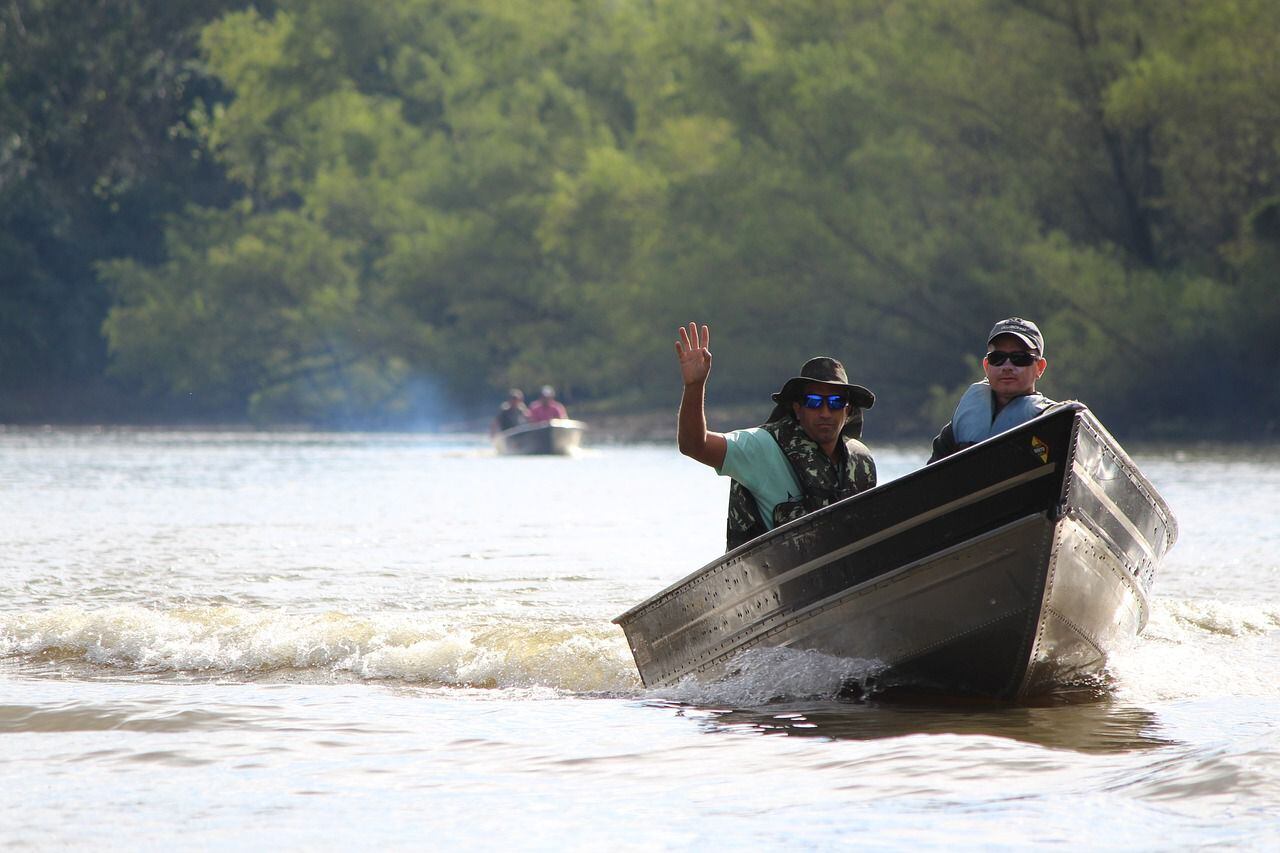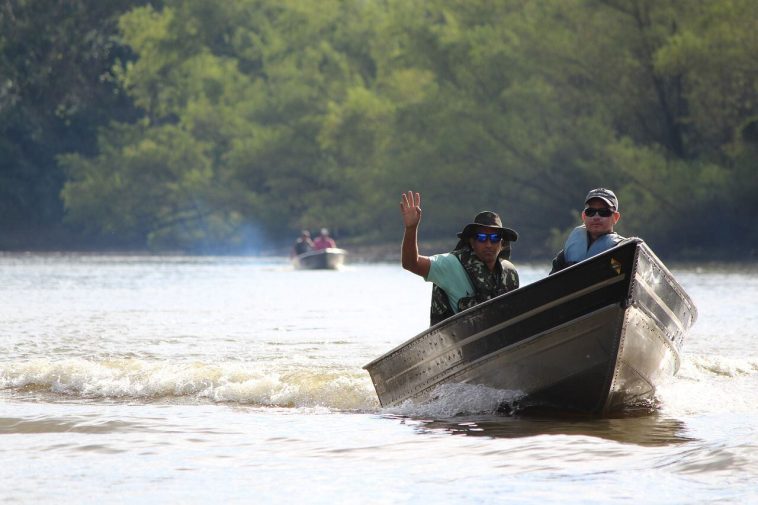
Opinion Editorial: A Closer Look at Pennsylvania’s Outdoor Safety and Conservation Initiatives
As we celebrate the extended Independence Day weekend, Pennsylvania’s multifaceted outdoor safety and conservation initiatives provide a compelling case study for understanding the ever-changing landscape of recreation, public safety, and wildlife conservation. This editorial takes a closer look at several locally driven efforts designed to protect our waterways, wildlife, and community well-being. In doing so, we explore the tricky parts, little details, and subtle parts inherent in promoting boater safety, fostering new conservation partnerships, and protecting our natural heritage.
Enhanced Boater Safety: Operation Dry Water in Pennsylvania
This past holiday weekend, the Pennsylvania Fish & Boat Commission (PF&BC) spearheaded a robust campaign to keep impaired boaters from endangering themselves and others. The initiative, part of a larger national effort known as Operation Dry Water, brought together multiple law enforcement agencies focused on refusing the chance of impaired boating accidents during one of the busiest recreational periods of the year.
Boating under the influence (BUI) remains a serious issue on our waterways. Through added police checkpoints and waterside patrols, officials aimed to reduce the number of mishaps that stem from risky on-water behavior. While the measures might seem intimidating to some, the commission’s approach has a clear objective: to increase boater awareness and educate the public on the tangled issues of impaired boating.
The campaign stands as a prime example of public safety in action. Here are some key insights into the operation:
- Collaboration: PF&BC joined forces with the National Association of State Boating Law Administrators, highlighting a coordinated effort that extends beyond state lines.
- Targeted Enforcement: Enhanced boating checkpoints were established, concentrating on waterways known for high traffic and recreational use during the holiday weekend.
- Public Education: The initiative emphasized the importance of staying sober while boating and raised public awareness about the potential nerve-racking consequences of impaired boating.
While the notion of intensified law enforcement on beloved recreational waters might initially feel overbearing to some, it’s important to recognize that these careful maneuvers are all about safeguarding lives. Working through such initiatives provides our community with not only immediate benefits in terms of safety but also fixed standards to help us figure a path toward long-term responsible boating practices.
Rebranding Conservation: Pheasants Forever’s New Identity
In another noteworthy development, Pheasants Forever—the vanguard of upland habitat conservation in North America—has rolled out a refreshed brand identity. The change marks a significant milestone in the organization’s history, the first major alteration since its inception in 1982.
The rebranding aims to inspire a unified effort among its members, partners, and supporters. It stands as a symbolic and strategic pivot designed to increase organizational presence, deepen member engagement, and spur mission growth across the country. Despite the nerve-racking nature of change, many conservation advocates have cheered the updated logos and identity, expecting that such evolution will lead to renewed energy in tackling the little twists of conservation in our rapidly changing environments.
Let’s take a closer look at the finer details of this rebranding and its implications for conservation efforts:
| Key Aspect | Details |
|---|---|
| Historical Legacy | Established in 1982, Pheasants Forever has long been synonymous with upland habitat conservation. |
| New Brand Identity | The refreshed logos and messaging aim to align the organization with contemporary conservation needs. |
| Member Engagement | The rebrand encourages broader participation among supporters, bridging generational gaps and geographical barriers. |
| Future Outlook | The modernization paves the way for innovative conservation techniques and heightened public interest in wildlife protection. |
This evolution, while loaded with challenges, represents a pivotal moment for those deeply invested in conservation. The updated presentation is not merely cosmetic; it is a call to action for every naturalist and outdoor enthusiast to embrace the new era of habitat conservation, addressing both the obvious and the subtle details that define our relationship with nature.
Infrastructure Improvements and Local Access: Upper Woods Pond Closure
Infrastructure enhancements often come with their own set of challenging bits and twists, as seen in the recent announcement concerning Upper Woods Pond in Lebanon Township, Wayne County. The temporary closure of the parking lot and boat ramp from July 21-24 is intended to facilitate critical improvements to the access road and boat ramp.
While an interruption in access might seem overwhelming to some local boaters and anglers, it represents a short-term inconvenience for long-term benefits. Such improvements are key to ensuring that our recreational venues remain safe, accessible, and well maintained.
Key benefits of these infrastructural changes include:
- Enhanced Safety: Upgraded access roads minimize the possibility of accidents and provide a smoother, safer experience for all.
- Better Accessibility: Modernized boat ramps and parking lots can accommodate increased visitor numbers while adhering to current safety guidelines.
- Long-Term Investment: Such projects might require temporary sacrifices, but they are crucial for preserving recreational resources over time.
The measures implemented at Upper Woods Pond are a practical reminder that even the most scenic and beloved spots need regular enhancements. By reinforcing safety and access, community leaders are ensuring that these natural treasures continue to be enjoyed for generations.
Everyday Heroes in the Field: Recognizing a Lifesaving Park Manager
In a story that illustrates the power of quick thinking and community spirit, a park manager from the Pennsylvania Department of Conservation and Natural Resources (DCNR) has received well-deserved recognition. On the evening of July 7, 2024, during a critical emergency at Tobyhanna State Park, Justin Waid, though off-duty, stepped in to save a swimmer whose life was at risk.
Despite not being on official duty when the emergency struck, Waid, along with a vigilant DCNR Ranger and an EMT, managed to administer CPR, use an AED, and maintain the victim’s airway until professional medical help arrived. Their calm and coordinated actions, executed under a tense and demanding situation, resulted in a full recovery without lasting neurological impacts.
This incident speaks volumes about the dedication of those who work tirelessly behind the scenes. Here are several factors that set this story apart:
- Spontaneous Bravery: Waid’s immediate intervention is an example of individual courage that often goes unnoticed but makes a huge difference in emergencies.
- Team Coordination: The collaborative efforts of the DCNR team highlight the importance of structured response protocols and shared dedication to public safety.
- Community Impact: Recognitions like these are critical; they remind us that local heroes are always ready to step up during a crisis.
This story is a powerful illustration of how quick thinking and calm management during emergencies can avert a tragedy. It is a timely reminder that vigilance and preparation are simply super important when it comes to outdoor safety.
Public Health and Tick Bite Prevention: Addressing Lyme Disease Risks
Another noteworthy aspect of Pennsylvania’s multifaceted approach to outdoor safety is the proactive stance on tick bite prevention and Lyme disease education. Representatives from the Departments of Health, Conservation and Natural Resources, and Environmental Protection convened at Little Buffalo State Park to demonstrate best practices for preventing tick bites.
Lyme disease remains a tangible threat in our region, with Pennsylvania typically ranking among the top states in reported cases per 100,000 residents. In fact, last year alone saw over 16,000 lab-confirmed cases of Lyme disease. The educational initiative at Little Buffalo State Park was all about arming the public with practical advice and real-time data.
The campaign emphasized several key points related to preventing Lyme disease and other tick-borne illnesses:
- Awareness of High-Risk Areas: An online dashboard now illustrates where ticks are most prevalent, helping residents and visitors plan their outdoor activities with caution.
- Practical Prevention Tips: The demonstration included detailed advice on wearing protective clothing, using insect repellent, and performing thorough tick checks after spending time outdoors.
- Accessible Information: By making relevant data easily available, the initiative empowers individuals to take proactive measures to protect themselves and their families.
Although the idea of tick bite prevention might seem like one of those everyday reminders, it’s these little details—the simple precautions—that add up to a major difference. The initiative serves as a model for the kind of public health campaigns needed in areas where Lyme disease cases continue to pose a significant risk.
Mentored Hunting Opportunities: Fostering Future Outdoor Enthusiasts
For many, the thrill of the hunt isn’t merely a recreational pastime—it’s a way to connect deeply with nature while contributing to wildlife management. Recognizing this, the Pennsylvania Game Commission, in collaboration with Iron Senergy, is offering a mentored archery deer hunt for novice hunters. Scheduled for October 17-18 in Waynesburg, this program is designed to introduce children and adults, aged 12 and over, to managed hunting on private lands.
The program is set up as an opportunity to demystify what can seem like a intimidating process, making the hunting experience both educational and accessible. All necessary gear, including crossbows, ground blinds, and antlerless deer tags, is provided for participants. All that’s required is a permit purchase or a general hunting license for the 2025-26 season.
Here are some notable features of the mentored hunt:
- Guided Learning: Participants benefit from the expertise of experienced mentors. This hands-on guidance ensures that everyone, regardless of prior experience, can learn the fine points of responsible hunting.
- Inclusivity: By welcoming newcomers in a structured environment, the program fosters a new generation of outdoor enthusiasts and responsible wildlife managers.
- Comprehensive Support: With gear provided and proper permits in place, the event removes many of the confusing bits associated with getting started in hunting.
This initiative is a shining example of how managed hunting programs can bridge the gap between seasoned hunters and beginners. It demystifies a process that is sometimes equated with nerve-racking challenges and transforms it into a valuable educational experience. For many, this will be the first step into a lifelong relationship with outdoor conservation and wildlife management.
Integrating Public Awareness with Conservation Efforts
As we reflect on these initiatives—enhanced enforcement on the water, rebranding in conservation organizations, infrastructure improvements, swift emergency responses, public health safety measures, and educational hunting experiences—it becomes evident that a common thread runs through all these efforts: a commitment to fostering a safe, responsible, and engaged outdoor community.
Pennsylvania’s approach demonstrates that public safety and environmental stewardship are not mutually exclusive. Instead, they are interwoven strategies that aim to enhance our collective well-being. By focusing on the small distinctions and subtle details—a reliable boat safety campaign here, a reimagined conservation brand there—we find a comprehensive strategy to manage our natural resources amid a landscape full of problems and challenges.
This integrated approach relies on community collaboration, the effective use of technology, and consistent public education. From statewide efforts to reduce impaired boating to localized improvements at popular recreational sites, every measure, no matter how minor it might seem, builds toward a broader mission of conservation and safety.
Below is a summary in table format that illustrates the key components of these initiatives and their interrelated benefits:
| Initiative | Primary Goal | Main Benefit |
|---|---|---|
| Operation Dry Water | Reduce impaired boating incidents | Increased waterway safety during peak recreational times |
| Pheasants Forever Rebranding | Modernize conservation identity | Enhanced member engagement and visibility in conservation efforts |
| Upper Woods Pond Improvements | Upgrade access infrastructure | Safer and more efficient public access for boaters and anglers |
| Park Manager Recognition | Acknowledge heroic actions in emergencies | Inspiration for public service and enhanced community safety protocols |
| Tick Bite Prevention Campaign | Reduce Lyme disease cases | Better-informed public taking proactive safety measures |
| Mentored Hunting Program | Introduce new hunters to responsible wildlife management | Educational growth and sustainable hunting practices |
The above summary underscores how each initiative, while unique in focus, contributes to the holistic goal of protecting Pennsylvania’s natural resources and ensuring public safety. It’s a testament to how concerted efforts across multiple fronts can ultimately lead to a safer and more sustainable approach to enjoying our outdoors.
Overcoming Challenges in Outdoor Safety and Conservation
As with any large-scale initiative, there are tricky parts and confusing bits that must be worked through. Each program faces its own set of challenges—from coordinating across multiple agencies and managing public perception to addressing infrastructural constraints and ensuring inclusivity in public health campaigns. Yet, it is through addressing these twists and turns that the true strength of Pennsylvania’s outdoor policies is revealed.
Some of the common challenges that have been noted include:
- Coordination Among Agencies: Bringing together law enforcement, conservation officers, and health officials requires thorough planning and frequent communication.
- Public Perception: Measures like increased enforcement on waterways and temporary closures can initially be met with skepticism by the local community.
- Resource Allocation: Balancing budgets and ensuring that every initiative receives the necessary funding is a delicate endeavor in an era full of problems and competing priorities.
While these challenges may appear overwhelming at a glance, they also provide learning opportunities. The success observed in programs like Operation Dry Water and the coordinated response at Tobyhanna State Park proves that through persistence and collaboration, communities can effectively manage their way through even the most tangled issues. It’s important that we, as members of the outdoor community, continuously support these efforts and appreciate the behind-the-scenes work that goes into every public safety and conservation measure.
Bridging the Gap Between Recreation and Responsibility
The initiatives detailed above are not isolated events, but part of a larger framework that bridges recreation and responsibility. Whether it’s through the provision of mentored hunting experiences designed to educate new individuals or the integration of real-time data for public health initiatives like tick bite prevention, every step taken builds towards a more responsible and informed outdoor culture.
This bridge is crucial, particularly as recreational activities continue to grow in popularity. Engaging with nature can be wonderfully uplifting, yet it also comes with the responsibility to maintain and protect the environments we cherish. As residents and visitors, understanding the reasons behind these measures can help transform an initially off-putting process into an appreciated effort at communal safety and environmental stewardship.
Consider the following bullet list which outlines key points of responsibility for outdoor enthusiasts:
- Stay Informed: Keep up-to-date with local safety advisories, public health warnings, and conservation updates.
- Participate in Educational Programs: Engage in workshops and mentored hunts to learn about responsible practices.
- Adopt Safe Practices: Whether boating, hiking, or engaging with wildlife, always prioritize safety protocols recommended by experts.
- Be an Advocate: Support local initiatives, volunteer in conservation projects, and help spread awareness of the fine shades between mere recreation and responsible enjoyment.
This proactive stance is not only key for your personal safety—it is central to cultivating a culture that values both recreation and environmental integrity. By understanding and participating in community efforts, outdoor enthusiasts help pave the way for a future where fun and safety go hand in hand.
Future Outlook: Expanding Our Outdoor Horizons
Looking ahead, the initiatives in Pennsylvania serve as a microcosm of what can be achieved when communities, government agencies, and conservation entities unite under a common goal. The path forward involves embracing innovative strategies and continuously learning from past experiences, both the good and the challenging.
Here are some steps that could advance outdoor safety and conservation initiatives even further:
- Increased Collaboration: Foster more robust partnerships between state agencies, local governments, and community organizations to streamline efforts and share best practices.
- Technological Integration: Utilize the latest technologies, such as real-time tracking and data dashboards, to give residents a clearer picture of safety risks like tick infestations or high-risk boating zones.
- Community Engagement: Organize town hall meetings, educational seminars, and interactive workshops to provide residents with the opportunity to voice concerns and contribute ideas for sustainable outdoor policies.
- Investment in Infrastructure: Prioritize projects that offer long-term benefits, ensuring that facilities, access points, and recreational areas are maintained to a high standard.
These strategies are not merely theoretical; they are practical steps that can help communities thrive in both good times and challenging periods. The spirit of continuous improvement, a recognition that nothing is ever perfect, is essential for navigating through the multiple layers of outdoor safety and conservation. By finding your way through the sometimes complicated pieces of administrative and logistical planning, everyone involved can contribute to a resilient and thriving outdoor community.
Finding the Balance Between Enjoyment and Preservation
One of the essential conversations in any outdoor community is how to enjoy nature responsibly without compromising its future. The current initiatives in Pennsylvania, from enhanced boating patrols to rebranding conservation organizations, are evidence of a balanced approach that respects both recreation and preservation.
At the heart of these efforts is the acknowledgement that the natural environment is not an inexhaustible resource. Each action taken to ensure safety and proper management—whether it involves routine maintenance of access roads or proactive health measures to prevent tick-borne diseases—is a step towards preserving our outdoor heritage.
To further illustrate this balance, consider the following table which outlines the correlation between recreational enjoyment and the measures taken to sustain these natural resources:
| Recreational Activity | Safety/Conservation Measure | Preservation Outcome |
|---|---|---|
| Boating | Enhanced BUI checkpoints and waterway patrols | Reduced accidents and safer waterways |
| Hunting | Mentored hunts ensuring responsible practices | Better-managed wildlife populations |
| Access to Nature Spots | Infrastructure improvements in parks and boat ramps | Long-term usability and reduced risk of accidents |
| Public Health | Tick bite prevention campaigns | Mitigation of Lyme disease spread |
This balance is not static; it requires constant adjustments, thoughtful planning, and a willingness to embrace new ideas in the ever-evolving landscape of outdoor activities. It is through this delicate balance that we can both relish our immediate surroundings and ensure that they remain vibrant and pristine for future generations.
Embracing a Culture of Continuous Improvement
The initiatives and improvements observed this past holiday season are a reminder of the continuous journey towards creating safer, more sustainable outdoor environments. Each program, from Operation Dry Water’s focused enforcement to innovative public health tools and even inspiring individual acts of heroism, represents a chapter in this ongoing narrative.
For residents, outdoor enthusiasts, and policy makers alike, there are several key takeaways to consider:
- Adaptability is Essential: Environments change and so do risks; strategies must be flexible enough to adjust to new challenges and opportunities.
- Community Involvement Matters: When the public is informed and engaged, initiatives are far more effective.
- Innovative Thinking Drives Progress: From integrating technology into safety campaigns to rebranding longstanding organizations, forward-thinking ideas are at the heart of effective conservation and safety efforts.
- Acknowledge the Everyday Heroes: Celebrating individuals who contribute to public safety not only honors their actions but also inspires others to take part and make a difference.
In times when everyday life can seem loaded with problems and challenges, the ability to work through these tangled issues while ensuring public safety and environmental preservation is commendable. Small steps, like applying innovative techniques or simply promoting public awareness, can go a long way in shaping a sustainable future for outdoor recreation.
Conclusion: A Community United by Outdoor Safety and Conservation
In closing, Pennsylvania’s recent initiatives in public safety and environmental conservation highlight how a coordinated effort can yield substantial benefits for both individuals and the community at large. Whether it is the stern measures implemented during Operation Dry Water, the forward-thinking rebranding of an established conservation organization, or the urgent yet compassionate responses to emergencies in our parks, the underlying theme remains clear: our outdoors require thoughtful, ongoing care.
These programs are a reminder that our recreational activities—whether boating, hunting, or simply enjoying a day out in nature—are enhanced when paired with robust safety measures and a commitment to conservation. As we look ahead, it is super important to recognize that every effort, from the smallest public health campaign to the largest infrastructural project, plays a vital role in creating a safe, enjoyable, and sustainable outdoor environment.
This call for unity and continuous improvement is one that calls upon every individual—policy makers, local leaders, outdoor enthusiasts, and concerned citizens—to work through the complicated pieces and subtle parts of conservation and public safety. By staying informed, taking advantage of educational opportunities, and supporting community-led initiatives, we can ensure that our outdoor spaces remain a cherished resource for all.
Ultimately, the legacy of these efforts will be measured not only by the safety records and conservation successes but also by the enduring spirit of community and collaboration they foster. Let us all take a moment to reflect on how our collective actions today create a legacy of enjoyment, safety, and preservation for countless generations to come.
Originally Post From https://www.outdoornews.com/2025/07/11/pennsylvania-mixed-bag-pfbc-conducts-extra-bui-checks-july-4-6/
Read more about this topic at
Outdoor Safety Tips
Ensuring Indoor and Outdoor Environments and Materials …


